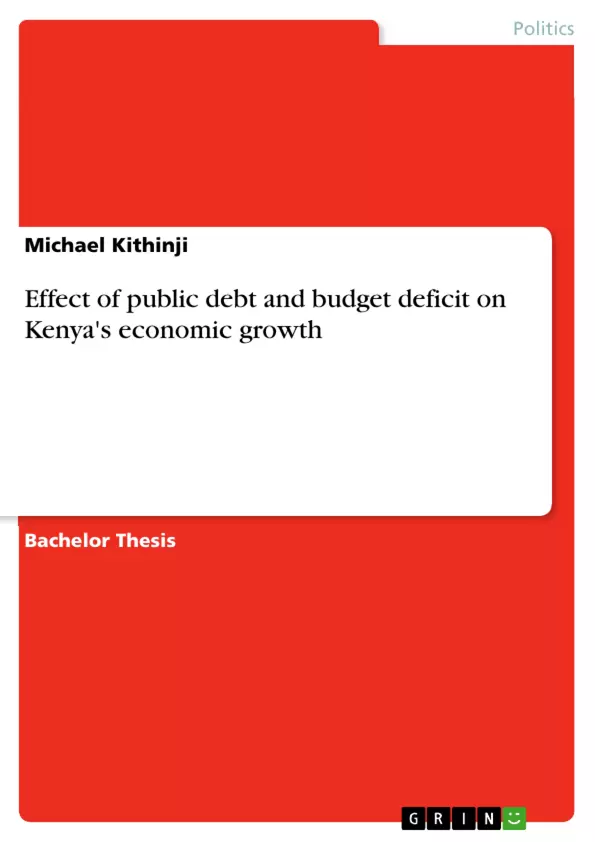This paper discusses the effect of public debt and budget deficit on Kenya's economic growth.
Kenya's public debt has proliferated, precipitating debate on its impact on economic performance and causing public anxiety. The purpose of this quantitative ex post facto study was to investigate the long run and causal relationship between Kenya's public debt and economic growth.
Keynesian's theory, Ricardian equivalence theory, and neoclassical theory provided the framework for the study. Research questions one and two address the causal relationship between public debt and select covariates as independent variables and actual gross domestic product (GDP) growth rate as the dependent variable.
Research question three addresses the relationship between primary budget balance and public debt. Archival data were analyzed using the vector error correction model and autoregressive distributed lag methods. Findings show a positive long-run causality between public debt and real GDP growth. The relationship between primary budget balance and public debt is positive and statistically significant, demonstrating that Kenya's debt is sustainable. Findings may be used to promote the adoption of fiscal policies that increase economic growth, savings, investments, job creation, and living standards of Kenyans.
For a good economy to thrive in any given country, there should be plenty of productive resources for its needs at that particular time. In most countries, especially Kenya, needs are growing while the resources to meet them are insufficient or even depleted completely. The growing budget has become a problem for the Kenyan government since our economies are expanding. However, the rate is not able to meet the rising demand for the ever-increasing population. At this level, the country is forced to procure internal and external debts to finance its budget deficit. However, in the long run, this does not solve the problem because the investment programs do not give good returns, hence losing.
Inhaltsverzeichnis (Table of Contents)
Zielsetzung und Themenschwerpunkte (Objectives and Key Themes)
Please provide the text to be summarized so I can create a preview with objectives and key themes.
Zusammenfassung der Kapitel (Chapter Summaries)
Please provide the text to be summarized so I can create chapter summaries for the preview.
Schlüsselwörter (Keywords)
Please provide the text to be summarized so I can create a preview with keywords.
- Quote paper
- Michael Kithinji (Author), 2021, Effect of public debt and budget deficit on Kenya's economic growth, Munich, GRIN Verlag, https://www.grin.com/document/1223509



